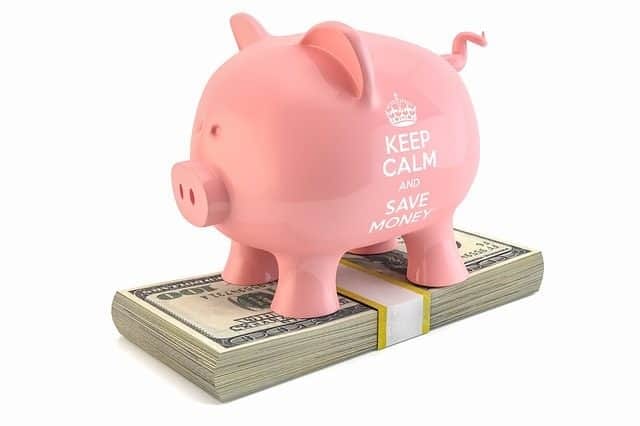To make Wealthtender free for readers, we earn money from advertisers, including financial professionals and firms that pay to be featured. This creates a conflict of interest when we favor their promotion over others. Read our editorial policy and terms of service to learn more. Wealthtender is not a client of these financial services providers.
➡️ Find a Local Advisor | 🎯 Find a Specialist Advisor

It’s inevitable. In every life a little rain must fall. I’m not talking about floods or a Noah’s ark-type deluge, but more like the kind of unexpected shower that really messes up your day. The kind that comes with an equally unexpected price tag.
Like when your car makes a “funny” noise that ends up being a $400 repair…
Or when the family pet has an emergency requiring a quick trip to the vet’s office…
Or when winter takes a nasty turn and as the temperature plunges your heating bill skyrockets.
You can rack up a whole lot of expenses from life’s little annoyances. Pile up enough of these surprises all at once and you can be left scrambling trying to find a way to pay for it all.
And that’s where having a few thousand dollars stashed away in a rainy day fund can make all the difference.
Can’t I Just Use a Credit Card to Cover My Rainy Day Expenses?
Well, yes and no (but mostly no).
Certainly, you could use a credit card. In fact, many credit card companies hope you do. They advertise how your card is the ideal way to take care of nagging expenses you didn’t plan for in your budget.
And to a certain extent, they’re right. If you have the ability to pay off the entire debt before you incur any interest charges, then the convenience of using a credit card for life’s unexpected expenses might be the way to go.
But once the stress of the emergency has passed, you might be tempted to delay paying your balance. After all, the minimum payment seems so reasonable and there’s always something else you could spend your money on, right?
And that would be a big mistake.
You see, each month you pay only the minimum balance, you could be racking up some hefty interest charges.
Let’s take the example of a credit card debt of $2,000 with an interest rate of 18.9%.
If you only make the minimum monthly payments, the total amount you’ll pay with interest will balloon from $2,000 to $3,161.
And it will take you 8 years and 4 months to pay off your debt.
That’s a whole lot of money and time to pay for something that was a simple, one-time annoyance.
And that’s why, my friend, you need a rainy day fund.
7 Tips for Setting Up a Rainy Day Fund

With 78% of American workers reporting they live paycheck to paycheck, you might think the goal of saving a few thousand dollars in a rainy day fund is unattainable. But while it may be challenging, it can be done and the financial benefits (as we’ve seen with our credit card example) can be enormous.
Follow just a few of these tips and you could easily see yourself well on the way to having that extra cash when you really need it.
Tip 1: Start with a Realistic Budget.
You can’t start saving money unless you know how much you’re bringing in each month and how much you’re spending. But creating a budget you can stick with is more than just knowing your numbers. It’s also about finding the motivation to consistently stay on track even when you’re tempted to splurge on an impulse purchase or two.
Using an online budgeting app can give you that motivation and valuable insights into your spending habits. There are both free apps available and ones that will charge you anywhere from $5 to $10 a month for their services. Most apps give you the ability to set and track goals, along with a whole slew of neat features like graphs and pie charts to help you visualize your financial progress.
Tip 2: Establish a Savings Goal.
Whether you create your budget using an app or go old-school with pencil and paper, you need to realize this is just the beginning. Once the initial number crunching is done, you need to use that info to set your savings goal.
If saving is new to you, start small with a goal you’re likely to achieve quickly, such as $50 or $100 a month until you’ve saved $500 in your rainy day fund. Once you’ve achieved that goal, set a new goal for a higher amount that you can realistically achieve in a short time.
Tip 3: Stash Your Cash in a High-Yield Savings Account.
To make tracking easier and to prevent yourself from dipping into your fund for extravagant purchases, you’ll want to keep your rainy day fund separate from your primary checking account. A high-yield savings account is ideal for this purpose.
Many online banks offer high-yield savings accounts that pay more interest than traditional brick-and-mortar banks. Some online savings accounts have no monthly fees or minimum balance requirements. One drawback to an online account is that it may take a few business days to transfer money in and out of the account.
Tip 4: Put Your Savings on Automatic Pilot.
Set up an automatic monthly transfer from your checking account to your rainy day savings account. This simple step ensures you’ll consistently grow your savings every month and eliminates the possibility you’ll spend the money on other things. The idea is that if you don’t see the money and have easy access to it, you probably won’t be inclined to spend it.
Tip 5: Only Use the Money for True Rainy Day Events.
No cheating on what you define as a “rainy day event!” Spending your savings on concert tickets or a cool pair of sun glasses won’t cut it if you’re truly serious about setting aside money for surprise expenses.
If you’re tempted to spend your funds frivolously, remind yourself of the stress you felt the last time you had an unexpected charge and no funds to pay for it. Keep a copy of the bill where you can see it as a reminder of why you need to stick to your plan.
Tip 6: Be on the Lookout for Ways to Add to Your Savings.
Once you get the hang of saving money and seeing it grow in your account, you might actually feel excited about the opportunity to save even more.
You could get a side gig and save the money you earn. Did you get a raise or work bonus? Add that to your savings. If you receive a yearly tax refund, stash that away as well. Even better, adjust your withholding amounts and save the difference every pay check.
Tip 7: Enlist the Help of Friends and Family to Stick to Your Savings Goal.
Chances are somebody in your close circle shares your desire to save money. Form a buddy system and encourage one another to meet your goals. Studies show just by sharing goals with another person you increase your odds of achieving them. Meet regularly to discuss your savings progress, share tips, celebrate successes, and offer feedback on how to make improvements.

One Final Advantage to Setting Up a Rainy Day Fund
Once you become adept at saving relatively small amounts, you could use this skill as a stepping stone to a bigger savings goal like starting an emergency fund. An emergency fund is like a rainy day fund on steroids.
Many financial experts agree it’s a good idea to have a three- to six-month emergency fund to cover expenses in the event you lose your job or primary source of income. For most people, this means saving tens of thousands of dollars. While that’s a big goal, as you’ve seen with rainy day funds, it’s certainly achievable by implementing a few smart habits along with a dose of patience and perseverance.
Other articles you may enjoy:
- The Best and Worst Ways to Use Your Credit Cards
- What is a Financial Coach (and How to Find the Right One for You)

About the Author
Elizabeth Blessing
I’m an editorial writer and copywriter for financial and investment publishers.
I’ve written about growth investing for the award-winning newsletter, The Complete Investor, and about high-yield stocks for Leeb Income Millionaire and Leeb Income Performance.
To make Wealthtender free for readers, we earn money from advertisers, including financial professionals and firms that pay to be featured. This creates a conflict of interest when we favor their promotion over others. Read our editorial policy and terms of service to learn more. Wealthtender is not a client of these financial services providers.
➡️ Find a Local Advisor | 🎯 Find a Specialist Advisor

